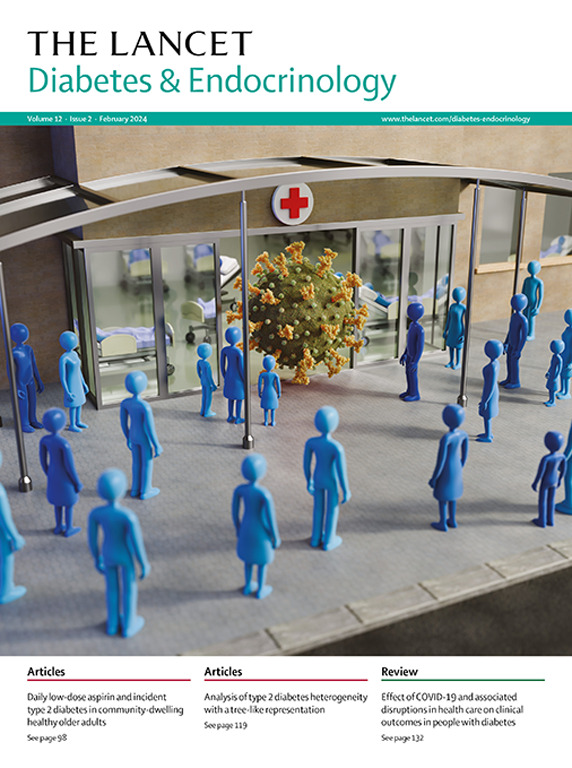下丘脑肥胖症:从基本机制到临床视角
IF 44
1区 医学
Q1 ENDOCRINOLOGY & METABOLISM
引用次数: 0
摘要
尽管肥胖症的性质多种多样,但有令人信服的遗传、临床和实验证据表明,大脑回路对肥胖症有重要影响。下丘脑包含体重平衡的主要调节回路,其失调可导致肥胖。虽然下丘脑通路的功能性扰动可能是常见肥胖症的基础,但下丘脑肥胖症这一术语的出现是为了定义那些罕见的严重肥胖症,在这些肥胖症中,下丘脑的基质可以被明确地识别出来,这些基质可以是遗传的,也可以是后天获得的。要深入了解下丘脑肥胖症的发病机理、临床表现和治疗目标,就必须理解下丘脑控制体重的途径的生理基础、这些途径受到干扰的机制(遗传或后天)以及这种干扰的后果。在本综述中,我们将从基础机制到临床角度对下丘脑肥胖症进行综述,重点关注当前的发展以及诊断和精确治疗这些罕见肥胖症的新途径。本文章由计算机程序翻译,如有差异,请以英文原文为准。
Hypothalamic obesity: from basic mechanisms to clinical perspectives
Despite the diverse nature of obesity, there is compelling genetic, clinical, and experimental evidence that endorses the important contribution of brain circuits to this condition. The hypothalamus contains major regulatory circuits for bodyweight homoeostasis, the deregulation of which can lead to obesity. Although functional perturbation of hypothalamic pathways could lie at the basis of common forms of obesity, the term hypothalamic obesity has been created to define those rare forms of severe obesity where a clear hypothalamic substrate can be identified, either of genetic or acquired origin. An in-depth understanding of the pathogenesis, clinical presentation, and therapeutic targets of hypothalamic obesity relies on the comprehension of the physiological basis of hypothalamic pathways governing bodyweight control, the mechanisms (either genetic or acquired) whereby they are perturbed, and the consequences of such perturbation. In this Review, we provide a synoptic overview of hypothalamic obesity, from basic mechanisms to clinical perspectives, with a major focus on current developments and new avenues for the diagnosis and precise treatment of these rare forms of obesity.
求助全文
通过发布文献求助,成功后即可免费获取论文全文。
去求助
来源期刊

The Lancet Diabetes & Endocrinology
ENDOCRINOLOGY & METABOLISM-
CiteScore
61.50
自引率
1.60%
发文量
371
期刊介绍:
The Lancet Diabetes & Endocrinology, an independent journal with a global perspective and strong clinical focus, features original clinical research, expert reviews, news, and opinion pieces in each monthly issue. Covering topics like diabetes, obesity, nutrition, and more, the journal provides insights into clinical advances and practice-changing research worldwide. It welcomes original research advocating change or shedding light on clinical practice, as well as informative reviews on related topics, especially those with global health importance and relevance to low-income and middle-income countries. The journal publishes various content types, including Articles, Reviews, Comments, Correspondence, Health Policy, and Personal Views, along with Series and Commissions aiming to drive positive change in clinical practice and health policy in diabetes and endocrinology.
 求助内容:
求助内容: 应助结果提醒方式:
应助结果提醒方式:


